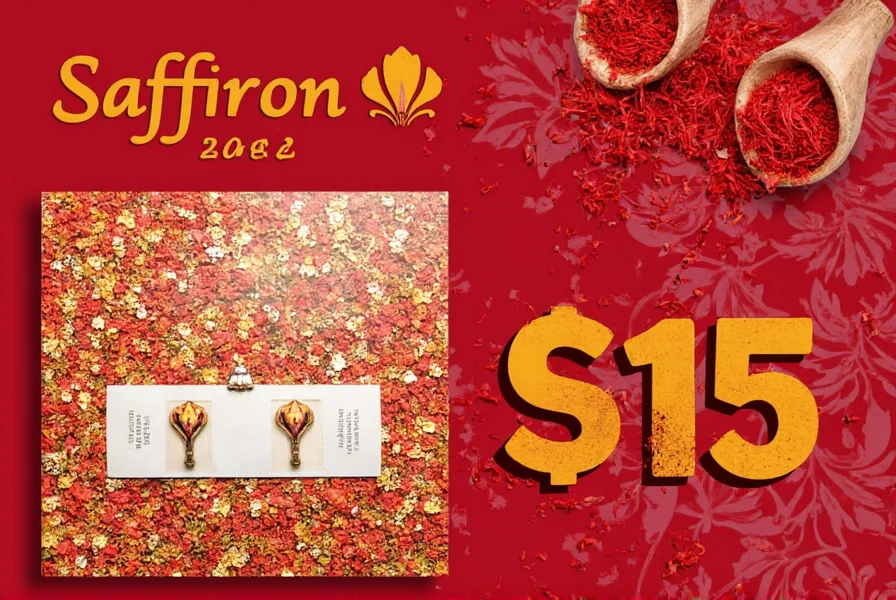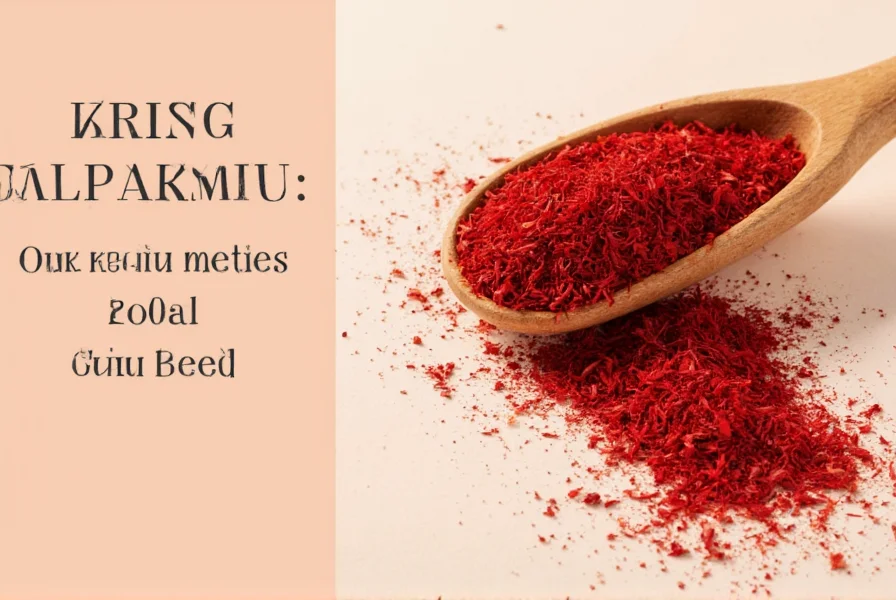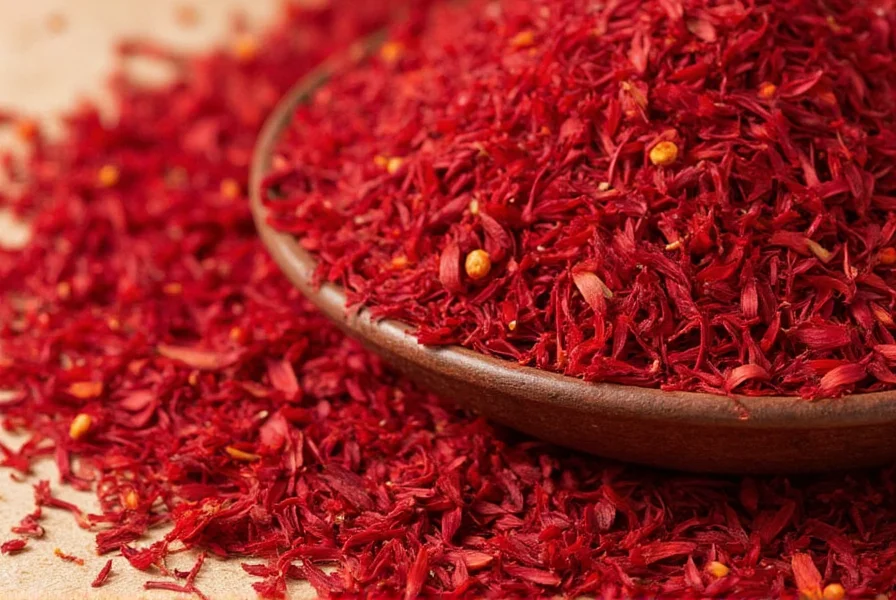Understanding saffron pricing requires examining why this crimson spice commands such premium rates. Each saffron stigma must be hand-picked from delicate crocus flowers, with approximately 75,000 blossoms needed to produce just one pound of dried saffron. This intensive labor requirement, combined with specific climate needs and short harvesting windows, creates natural supply constraints that directly impact saffron cost per ounce.
Factors Influencing Saffron Price Per Ounce
Saffron's extraordinary cost stems from multiple interconnected factors that affect its market value. The most significant elements include:
Harvesting Labor Intensity
Unlike mechanized crop harvesting, saffron collection remains almost entirely manual. Each crocus flower produces only three stigmas, which must be carefully plucked by hand at dawn when the blooms first open. This process requires skilled workers moving through fields multiple times daily during the brief two-to-three week harvest season. The human labor component accounts for approximately 70% of saffron's final cost.
Geographic Production Limitations
Only specific regions provide the ideal combination of climate, soil, and tradition for high-quality saffron cultivation. Iran produces about 90% of the world's saffron, with additional significant production in Spain, India (Kashmir), and Greece. Each region's unique terroir affects both quality characteristics and pricing structure. Iranian saffron typically offers the best value for saffron price per ounce, while Spanish and Kashmiri varieties often command premium pricing.
| Quality Grade | Price Per Ounce | Purity Standard | Color Strength (ASTA) |
|---|---|---|---|
| Grade I (Premium) | $400-$600 | 100% pure threads | 250+ |
| Grade II (Superior) | $300-$400 | 95-99% pure | 200-250 |
| Grade III (Standard) | $200-$300 | 90-95% pure | 150-200 |
| Commercial Grade | $100-$200 | 70-90% pure | 100-150 |
Current Market Pricing Analysis
When evaluating saffron price per ounce, it's essential to distinguish between retail and wholesale pricing structures. Retail consumers typically pay significantly more per ounce than commercial buyers due to packaging, marketing, and distribution costs.
Retail vs. Wholesale Saffron Pricing
At the consumer level, premium saffron commonly sells for $10-$20 per gram, translating to $280-$560 per ounce. Wholesale buyers purchasing in kilogram quantities might pay $1,500-$3,000 per kilogram ($42-$85 per ounce), representing substantial savings for bulk purchases. The dramatic price difference explains why restaurants and food manufacturers rarely purchase saffron in small consumer packages.
Regional Price Variations
Geographic location significantly impacts saffron cost per ounce. In Iran, the primary producer, high-quality saffron might sell for $10-$15 per gram locally. In European markets, the same quality could reach $20-$25 per gram, while North American consumers often pay $25-$30 per gram for premium products. These variations reflect transportation costs, import duties, and regional demand patterns.

Evaluating Saffron Value Beyond Price Per Ounce
When assessing saffron cost, consider these critical quality indicators that affect true value:
Color, Flavor, and Aroma Strength
The most reliable quality metric is the spice's coloring power, measured by ASTA (American Spice Trade Association) units. Premium saffron exceeds 250 ASTA units, meaning a small quantity imparts significant color and flavor. Lower-grade saffron with 150 ASTA units requires nearly twice the quantity to achieve similar results, effectively doubling the effective saffron price per ounce when measured by culinary impact.
Purity Verification
Authentic saffron should contain only crimson stigmas without yellow styles or other additives. Some sellers artificially inflate weight with moisture or mix saffron with cheaper substitutes like safflower or marigold. Reputable suppliers provide ISO 3632 certification verifying purity and strength. When comparing saffron price per ounce, always confirm whether the product is laboratory tested for authenticity.
Historical Price Trends and Market Stability
Saffron prices have remained relatively stable over the past decade, with minor fluctuations based on harvest yields. The 2018-2019 season saw prices dip slightly due to exceptional Iranian harvests, while drought conditions in 2021-2022 caused temporary 15-20% increases. Unlike commodities such as coffee or cocoa, saffron lacks futures markets and major price speculation, contributing to its consistent pricing structure.
Long-term trends show gradual price increases of 3-5% annually, primarily driven by rising labor costs in producing regions. However, saffron's status as a luxury culinary ingredient insulates it from dramatic price volatility seen in staple food commodities.

Smart Purchasing Strategies for Consumers
When shopping for saffron, focus on value rather than simply seeking the lowest saffron price per ounce. Consider these evidence-based approaches:
Buy Whole Threads, Not Powder
Whole saffron threads maintain potency longer and are less susceptible to adulteration. Powdered saffron often contains fillers and loses volatile compounds more quickly. While slightly more expensive per ounce, whole threads provide better long-term value and culinary performance.
Verify Supplier Credentials
Reputable saffron sellers should provide documentation of origin, harvest date, and quality testing. Look for suppliers who work directly with growers rather than multiple intermediaries. This direct relationship often yields better quality control and more transparent pricing for saffron cost per ounce.
Understand Your Actual Usage Needs
Most home cooks use only 0.1-0.2 grams per recipe. A single ounce (28 grams) represents 140-280 recipes, making smaller quantities more practical for occasional users. Consider purchasing 0.5-1 gram samples to evaluate quality before committing to larger saffron price per ounce investments.
Avoiding Common Saffron Pricing Scams
The premium nature of saffron makes it vulnerable to fraudulent practices. Be aware of these red flags when evaluating saffron cost per ounce:
- Prices significantly below $250 per ounce for "premium" saffron typically indicate adulterated product
- Products labeled "saffron" that appear bright red-orange rather than deep crimson
- Sellers unable to provide harvest dates or origin documentation
- "Deals" that include unusually large quantities at suspiciously low prices
Authentic saffron should produce a rich golden-yellow color when steeped in warm liquid, not an immediate intense red hue (which suggests artificial coloring). Conduct this simple test before making substantial investments based solely on saffron price per ounce listings.
Conclusion: Understanding True Saffron Value
While saffron price per ounce appears exceptionally high compared to other spices, its cost reflects genuine production constraints and exceptional culinary properties. When evaluating saffron cost, consider the spice's potency, shelf life, and the small quantities required per serving. A single ounce of premium saffron represents hundreds of uses, making the effective cost per recipe remarkably reasonable for this unparalleled flavoring agent.
What is the current average saffron price per ounce for culinary use?
As of late 2023, high-quality culinary saffron typically ranges from $300 to $500 per ounce. This price reflects Grade I or II saffron with ASTA coloring strength above 200 units. Commercial-grade saffron may cost $100-$200 per ounce but often contains fillers and delivers inferior flavor and color.
Why does saffron cost so much more than other spices per ounce?
Saffron's extraordinary cost stems from its labor-intensive harvesting process. Each crocus flower produces only three stigmas that must be hand-picked at dawn. Approximately 75,000 flowers yield just one pound of dried saffron. This intensive manual labor, combined with specific climate requirements and short harvesting windows, creates natural supply constraints that drive saffron price per ounce significantly higher than mechanized spice production.
How can I verify if I'm getting good value for the saffron price per ounce?
Evaluate saffron value by checking its coloring strength (ASTA units), with premium saffron exceeding 250 units. Examine threads for deep crimson color without yellow styles. Perform a water test: authentic saffron gradually releases golden-yellow color over 15-20 minutes. Compare price per culinary use rather than just per ounce - high-quality saffron requires less quantity per recipe. Reputable sellers provide harvest dates and origin documentation to verify quality claims.
Does saffron price per ounce vary by country of origin?
Yes, saffron price per ounce varies significantly by origin. Iranian saffron (90% of global production) typically offers the best value at $300-$450 per ounce for premium grades. Spanish saffron often commands $400-$600 per ounce due to branding, while Kashmiri saffron ranges $350-$500 per ounce. These differences reflect production costs, quality standards, and marketing rather than inherent quality superiority, as all three regions produce exceptional saffron when properly harvested and processed.
How much saffron should I expect to use per recipe when calculating effective cost?
Most recipes require only 0.05-0.20 grams of saffron per serving. A single ounce (28 grams) represents approximately 140-560 individual servings, depending on the recipe's saffron intensity. When calculating effective cost, premium saffron at $400 per ounce costs just $0.70-$2.85 per serving, making it economically viable for special occasion cooking despite the high saffron price per ounce.











 浙公网安备
33010002000092号
浙公网安备
33010002000092号 浙B2-20120091-4
浙B2-20120091-4